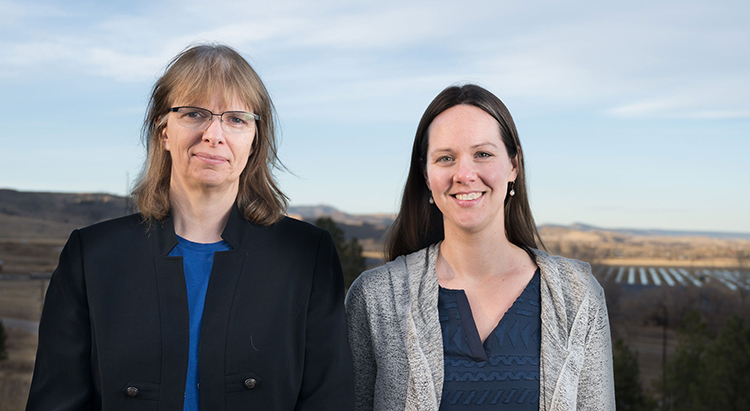CSU climate researchers among partners in new $20M NSF AI center
As partners in a five-year, $20 million NSF-funded program led by the University of Oklahoma, CSU will work to greatly expand how AI is used in environmental research, with a critical focus on making sure that the answers we get are not only accurate and fast, but trustworthy.
Research Professor Imme Ebert-Uphoff, working in both the Department of Electrical and Computer Engineering and CIRA at CSU, is leading CSU’s delegation in the new NSF AI Institute for Research on Trustworthy AI in Weather, Climate, and Coastal Oceanography announced Wednesday. Ebert-Uphoff is joined in the project by Atmospheric Science Associate Professor Elizabeth Barnes, Professor Chuck Anderson of the Department of Computer Science, and other CSU researchers, focusing on AI algorithm development, environmental applications, and workplace education and advocacy.
Artificial intelligence is everywhere under the skin of our modern world – our cars have sensors that detect traffic patterns and avoid collisions. Our phones recognize our faces and automatically unlock. Modern retail relies on artificial intelligence for stocking and logistics – everything from medical supplies to the tomatoes in the grocery store are now governed by algorithms that recognize patterns and guide purchasing and shipping decisions. And opportunities to apply AI in research fields abound.
The importance of artificial intelligence is such that the National Science Foundation introduced for the first time a $100 million program to fund institutes to study and develop newer and better AI algorithms – by far and away, the most significant direct commitment to AI that the NSF has ever provided. Five such institutes were funded under the program, including the OU-led program that CSU has partnered with.
Read the full Source article, “CSU climate researchers tied to new $20 million NSF AI center.”
Photo at top: Imme Ebert-Uphoff of CIRA and the Department of Electrical and Computer Engineering and Atmospheric Science Associate Professor Elizabeth Barnes



